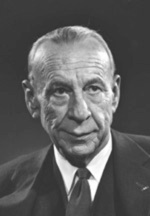Incorrect Inhaler Technique Among Healthcare Professionals - Asthma
Inhalers were developed in the 1778 by an English physician named John Mudge and were associated with lung complaints. It wasn't until the 20th century that they became connected with asthma treatment. The first inhalers were based on a pewter tankard and Mudge used it to inhale opium vapor for cough treatment. During the 1800s ceramic pots such as Dr. Nelson's inhaler started being used to inhale plant or chemical substances and then in the early 1860's, Dr. Siegle developed a steam spray inhaler. This treatment atomized liquid medication and was the beginning of nebulizer therapy. Nebulizers are commonly used today for asthmatics that have severe asthma attacks but cannot inhale as quickly and deeply as is required when using a pressurized inhaler. Alfred Newton developed the earliest recorded dry powder inhaler in 1864. He created a device for inhaling dry powder medications and he observed that the powder needed to be very fine and kept dry which is still true of dry powder inhalers today. His mistake was in the use of the drug potassium chlorate, now considered to be a lung irritant.
Early in the 20th century many advancements and discoveries were made for inhalers and the medications used in them. In 1948, the Abbott Aerohalor was developed as a dry powder inhaler used to deliver penicillin and in 1950, an inhaled corticosteroid was used by Reeder and Mackay to treat pneumonia and this began many investigations into using inhaled anti-inflammatories. Having correct inhaling technique is crucial for any asthmatic patient. Incorrect inhaler technique normally prevents patients suffering from asthma or chronic obstructive pulmonary disease (COPD) from receiving the utmost benefit from their inhaled medications. A brief verbal instruction about the correct technique along with the physical or audio-visual illustrations has the ability to prove more efficient, when repeated over time. Irrespective of the type of inhaler device prescribed, most of the Asthma or COPD patients do not tend to use their inhaler device correctly unless they receive appropriate instructions, like physical or audio- visual demonstration in their own language with an opportunity to allow them to practice at their own pace and comfort. Healthcare providers need to provide their patients with the in-depth step by step demonstration to follow the appropriate technique. learn free here causes: Most of the healthcare providers lack time and show partial interest in educating patients on the correct technique to use their inhalers. They even lag behind in accessing the patient's inhaling techniques. This is very important to ensure that the patient uses it correctly for better treatment outcome. More significantly, most healthcare providers themselves possess poor inhaler technique. Thus this leads to patients receiving guidance with incorrect techniques. Advised Solution: This universal problem can be improved by regular and reinforced training of the healthcare providers. There are interactive audio-visual courses available online for healthcare providers, to get better trained over various aspects of inhaling techniques for each device and earn credits.

Now I know that few of you will want to weight that much and it probably wouldn’t be possible, but you can use the squat to weigh what you wish. Paul did nothing but squats for a long time, even though he disliked the exercise very much; he knew it was the secret to the size and power he wanted. A 1200 lb. squat certainly shows that he obtained the power he wanted. We might mention that those people who use the squat develop an eventual ability to go up in bodyweight or down, as they wish, very rapidly. I also want to point out that the success is not due to the squat only, but to a combination of the squat and proper and increased feeding and nutrition. Every one of these fellows used heavy diet of one type or other, with most of them relying on lots of milk. This has been created by Essay Freelance Writers.
They would drink milk after their meals, with their meals, between meals and before bed time. I never used more than two quarts daily myself, but some of the fellows went up to a gallon or even six quarts. Some added vitamins and minerals to their diets, though this was later, as not much was known about the value of vitamin and mineral supplements for bodybuilders 30 years ago (1935). I recall that Hise once tried salt pork because it would make him drink more water and milk. It put weight on, but I’m not sure what kind. Still, we must realize that the body is about 75% water, so we must supply lots of moisture if we expect to gain fast. I can recall when Hise came to our house for a visit, my mother would place a quart bottle of water at his plate and had to fill it once or twice in addition. She also brought out all the food, for Hise was a tremendous eater. Many of the fellows drank water during their workouts, and some drank milk at this time.
I well recall walking into the home gym of another great gainer and weightlifter in Denver by the name of Ed Shepperd. There he was, resting after a set of squats and drinking milk from a quart bottle. Many fancy concoctions of foods were worked up and many of them seemed to do the job, but milk seemed to be the universal food they all liked to use. Today bodybuilders feel they have to do a lot of sets and pump up the muscles a lot in order to make gains. In those days we did one set and that was it We worked so hard that we couldn’t do another set if we had wanted to, and anyhow we didn’t know about multiple sets then. Sometimes someone would do sets but he didn’t really work them with a purpose or understand what he was doing. There was no pump because we only performed one set.